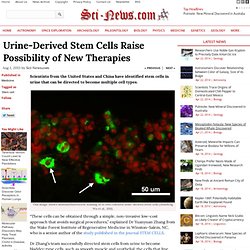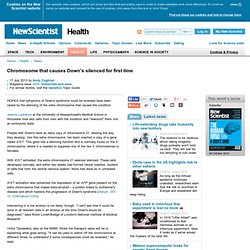

Soup-up your immune cells to tackle drug-resistant TB - health - 09 January 2014. Sixteen people in Belarus have been cured of tuberculosis after having their own immune cells multiplied outside their bodies, and given back to them.

Before treatment, their infections resisted many TB drugs, so the approach offers hope that such immune tricks might replace the antibiotics that are losing their power against bacteria. But harnessing the immune system will not be easy. About a third of the world's population is infected with the TB-causing bacteria (Mycobacterium tuberculosis).
Most infections are kept in check by the immune system, but every year active disease develops in 8.6 million people, and 1.3 million people die – a toll for one infection that is second only to HIV. Since 1990, the spread of TB has slowed, and death rates halved because of antibiotics that, if taken for long enough, kill off the bacteria. Calming effect In theory, heightening the body's own immune defences could be used alongside or even instead of using antibiotics to kill off TB bacteria. Autologous mesenchymal stromal cell infusion as adjunct treatment in patients with multidrug and extensively drug-resistant tuberculosis: an open-label phase 1 safety trial : The Lancet Respiratory Medicine. Urine-Derived Stem Cells Raise Possibility of New Therapies.
Scientists from the United States and China have identified stem cells in urine that can be directed to become multiple cell types.

This image shows immunofluorescent staining of in vitro cultured urine-derived stem cells (Shaofeng Wu et al., 2011). “These cells can be obtained through a simple, non-invasive low-cost approach that avoids surgical procedures,” explained Dr Yuanyuan Zhang from the Wake Forest Institute of Regenerative Medicine in Winston-Salem, NC, who is a senior author of the study published in the journal STEM CELLS. Dr Zhang’s team successfully directed stem cells from urine to become bladder-type cells, such as smooth muscle and urothelial, the cells that line the bladder.
But the urine-derived cells could also form bone, cartilage, fat, skeletal muscle, nerve, and endothelial cells, which line blood vessels. Nasal Spray For Snake Bite Paralysis - Health News. RedOrbit Staff & Wire Reports – Your Universe Online A team of California researchers has developed a novel approach to treating venomous snakebites by administering antiparalytics topically via a nasal spray, a breakthrough that could dramatically reduce the estimated 125,000 global snakebite fatalities each year.

The researchers, led by Dr. Chromosome that causes Down's silenced for first time - health - 17 July 2013. HOPES that symptoms of Down's syndrome could be reversed have been raised by the silencing of the extra chromosome that causes the condition.

Jeanne Lawrence at the University of Massachusetts Medical School in Worcester took skin cells from men with the condition and "rewound" them into an embryonic state. People with Down's have an extra copy of chromosome 21, altering the way they develop. Into this extra chromosome, her team inserted a copy of a gene called XIST. This gene has a silencing function and is normally found on the X chromosome, where it is needed to suppress one of the two X chromosomes in females.
With XIST activated, the extra chromosome 21 seemed silenced. XIST activation also prevented the expression of an APP gene present on the extra chromosome that makes beta-amyloid – a protein linked to Alzheimer's disease and which hastens the progression of Down's syndrome (Nature, DOI: 10.1038/nature12394). Intervening in a live embryo is not likely, though. Promoted Stories. Super-organs: building body parts better than nature - 24 July 2013.
FANCY a liver that works a little harder?

Synthetic DNA circuits inserted into human stem cells could soon allow us to build new organs with unprecedented precision and speed. The circuits can be designed on a computer and assembled from ready-made parts ordered online. The technique could prove an efficient way of making organs for transplant without the worry of rejection, and raises the tantalising possibility that it might one day be possible to upgrade the organs we were born with. Human cells have already been used to create a tiny liver and a set of neurons. "At the moment, the aim is to normalise cells, but in future, enhancement has to be on the menu," says Chris Mason, a professor of regenerative medicine at University College London, who wasn't involved in the work. "Everything we have in our bodies is hardwired," says synthetic biologist Patrick Guye at ... Solar Cell Eye Implants: Sight For The Blind? Scientists at Stanford University have come up with a system to help blind people see again using retinal implants that operate like tiny solar cells.

The photovoltaic (PV) chips, surgically placed under the retina, convert light into electric currents triggering signals in the retina, which then flow to the brain, enabling a patient to regain their vision. image via Stanford The team from Stanford’s School of Medicine said the technology might one day help restore sight to people who have lost vision because of certain types of degenerative eye diseases.